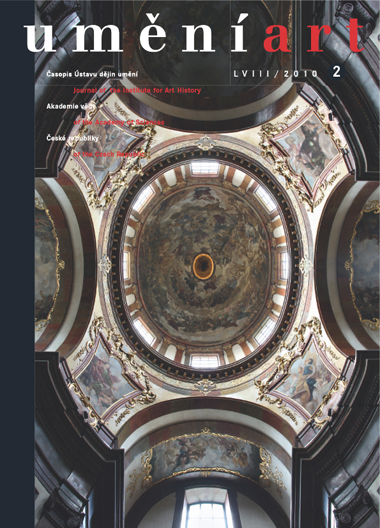Jana Zapletalová
Karel Škréta: Notes from the Archives in Italy
This article is made up of four disparate 'fragments' that provide information about Karel Škréta Sr. and his son during the time they spent in Italy. The name of Karel Škréta Sr. appears in the post mortem inventories of two Italian collections, both of which were coincidentally drawn up in 1656, approximately two decades after Škréta was in Italy. The first inventory mentions two paintings by Škréta on the theme of Adam and Eve. They were owned by Michiel Pietra, a Venetian painter and collector of German origin. Another painting by Škréta from his Italian period that we know of from old manuscript inventories of private collections is Tripudio di giocatori, which was in the Veronese collection of Giovanni Pietro Cortoni, a Veronese lawyer and prominent collector. Both Queen Christina of Sweden and the Duke of Modena Francesco I vied to purchase Cortoni's collection, which was ultimately acquired by the Duke of Mirandola Alessandro II Pico, who exhibited the collection in Mirandola. At the start of the 18th century the collection's paintings were sold off in Bologna. It is not currently known if both paintings still exist. We have no other information about them. The article at least offers information about the owners of the two collections and traces the fate of the collections after the owners passed away. The third and fourth parts of the article focus on the archives in Rome and note several mentions relating to the two painters: a small and as yet hypothetical piece of evidence that Karel Škréta Sr. resided in the parish of Santa Maria del Popolo and that his son spent three years in Rome in 1673-1675. This information means that it is necessary to reconsider the previous assumption that Karel Škréta Jr. participated in work on some of his father's later works. Archive materials in Rome also reveal that Karel Škréta Jr. was not born in 1646, as was previously assumed, but in 1650.
Full-text in the Digital Library of the Czech Academy of Sciences:
https://kramerius.lib.cas.cz/uuid/uuid:cfa58ae8-2d4e-f637-0430-33e3e76e9dc4
< back

